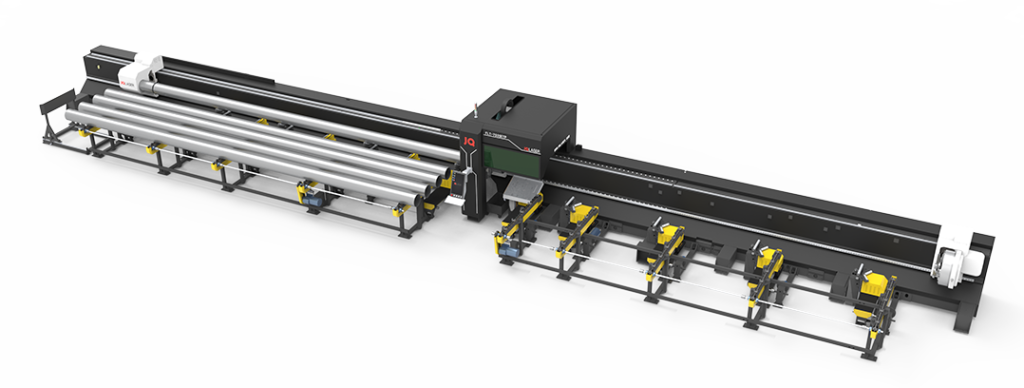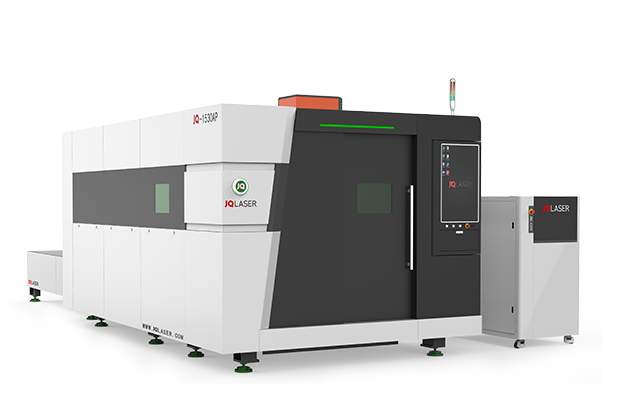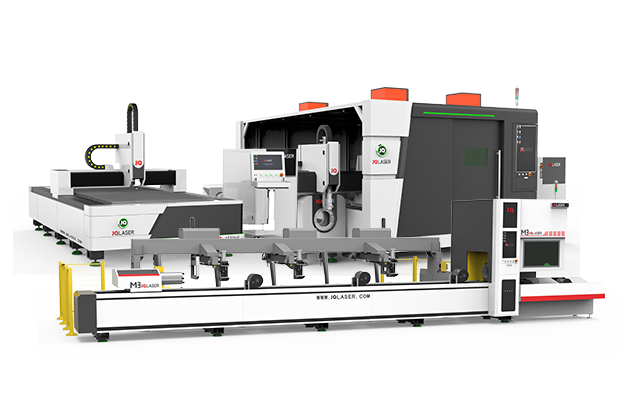Tube laser cutting machines are an essential tool in the manufacturing industry, providing high precision and efficient cutting capabilities for a variety of materials. In this article, we will explore the different cutting capabilities of a tube laser cutting machine and how it can be used in various applications. We will discuss the different types of lasers used in these machines, the materials they can cut, and the advantages of using a tube laser cutting machine over other cutting methods. By understanding the capabilities and limitations of a tube laser cutting machine, manufacturers can make informed decisions about the best equipment for their specific needs.
Tube Laser Cutting
Tube laser cutting is a manufacturing process that involves using a laser to cut precise shapes and profiles out of tubes made of metal or other materials. The laser beam is generated by a laser source and is focused and directed through a set of optics to the cutting head, which houses the focusing lens and nozzle. The cutting head is mounted on a movable carriage, which can be controlled by a computer numerical control (CNC) system to position the laser beam at specific points on the workpiece.
Types of Tubes Used
Tube laser cutting machines can be used to cut a variety of tubes made of different materials. Some common types of tubes that are used in laser cutting include:
- Metal tubes: Metal tubes are the most common type of tubes used in laser cutting, and include materials such as steel, aluminum, brass, and copper. Metal tubes are often used in the automotive, aerospace, and construction industries.
- Plastic tubes: Plastic tubes can be cut using laser cutting machines, and are often used in the medical, automotive, and furniture industries.
- Glass tubes: Glass tubes can be cut using laser cutting machines, and are used in a variety of applications, including scientific instruments, lighting, and decorative elements.
- Composite tubes: Composite tubes, which are made of a combination of materials such as carbon fiber and resin, can also be cut using laser cutting machines. These tubes are used in the aerospace and sporting goods industries.
Benefits of Tube Laser Cutting

Tube laser cutting has a number of benefits over traditional manufacturing processes, including:
- High precision: Laser cutting machines are able to produce cuts with high precision and accuracy, with tolerances as low as 0.1mm.
- Efficiency: Tube laser cutting is a highly efficient process that can produce parts in a short time, with minimal material waste.
- Complex shapes: Laser cutting machines are able to cut complex shapes and profiles that would be difficult or impossible to produce using other methods.
- Minimal material distortion: Laser cutting generates minimal heat, which helps to prevent warping or distortion of the material.
- Versatility: Laser cutting machines can be used to cut a wide range of materials, including metals, plastics, and wood.
- Cost-effectiveness: Laser cutting can be more cost-effective than other manufacturing processes, especially for small batch production or prototyping.
Advantages of Automated Process
Tube laser cutting machines are automated systems that use a laser beam to cut tubes made of metal or other materials into specific shapes and profiles. The use of automation in the cutting process offers a number of advantages over traditional manual methods, including:
- Increased precision: Automated laser cutting machines are able to produce cuts with a high degree of accuracy and repeatability, with tolerances as low as 0.1mm.
- Greater efficiency: Automated laser cutting machines can operate at a faster pace and with minimal material waste, resulting in higher productivity and lower costs.
- Improved consistency: Automated laser cutting machines can produce parts with consistent quality, reducing the risk of defects or variations in the finished product.
- Enhanced safety: Automated laser cutting machines minimize the need for manual handling of materials, which can help to reduce the risk of injury to workers.
- Greater flexibility: Automated laser cutting machines can be programmed to cut a wide range of shapes and profiles, and can be easily adapted to new designs or requirements.
Accuracy & Quality of Cut
The accuracy and quality of the cut produced by a tube laser cutting machine is determined by a number of factors, including:
- Laser power: The power of the laser beam plays a significant role in the accuracy and quality of the cut. Higher laser powers are able to cut through thicker materials, but can also result in increased heat distortion.
- Focusing optics: The focusing optics, which consist of the focusing lens and nozzle, play a critical role in the accuracy and quality of the cut. The optics must be properly aligned and focused to produce a clean, precise cut.
- Assist gas: The assist gas, which is used to blow away the molten material and cool the cutting area, can affect the quality of the cut. The type and pressure of the assist gas must be carefully controlled to achieve the desired results.
- Material properties: The properties of the material being cut, such as thickness, hardness, and conductivity, can also affect the accuracy and quality of the cut.
Cost Considerations
There are several cost considerations to keep in mind when using a tube laser cutting machine, including:
- Initial investment: The cost of a tube laser cutting machine can vary widely depending on the size and capabilities of the machine. Larger machines with more advanced features will typically have a higher price tag.
- Operating costs: The ongoing operating costs of a tube laser cutting machine include the cost of the laser source, the assist gas, and any consumables such as lenses and nozzles. These costs can vary depending on the specific machine and the materials being cut.
- Material costs: The cost of the materials being cut will also be a factor in the overall cost of the cutting process. Some materials, such as metals and plastics, can be more expensive than others.
- Labor costs: If the laser cutting process is being performed manually, the cost of labor will also be a factor. Automated laser cutting machines can reduce labor costs, but may have a higher initial investment.
Conclusion
Tube laser cutting is a highly precise and efficient manufacturing process that is used in a wide range of industries to produce components and parts with high accuracy and repeatability. Tube laser cutting machines are automated systems that use a laser beam to cut tubes made of metal or other materials into specific shapes and profiles. The use of automation in the cutting process offers a number of benefits, including increased precision, efficiency, consistency, and safety. Tube laser cutting machines can cut a wide range of materials, including metals, plastics, wood, glass, and composites. The cost of using a tube laser cutting machine will depend on a variety of factors, including the initial investment, operating costs, material costs, and labor costs. Overall, tube laser cutting is an important manufacturing process that has a wide range of applications in various industries.





